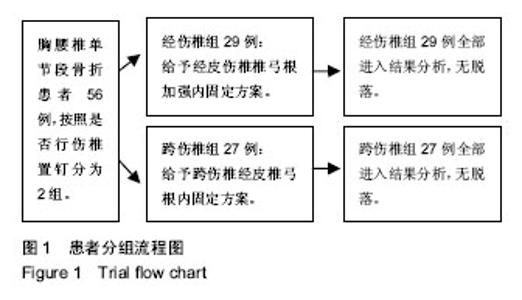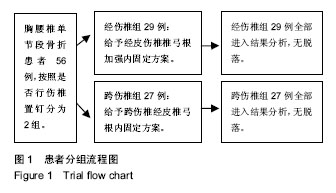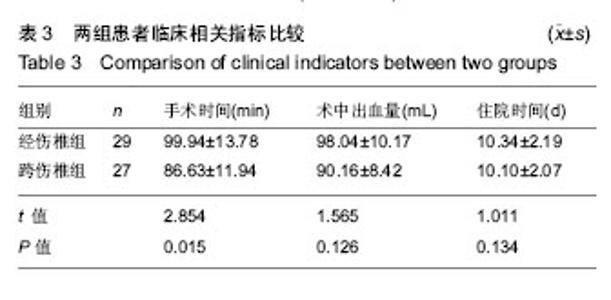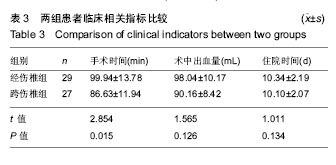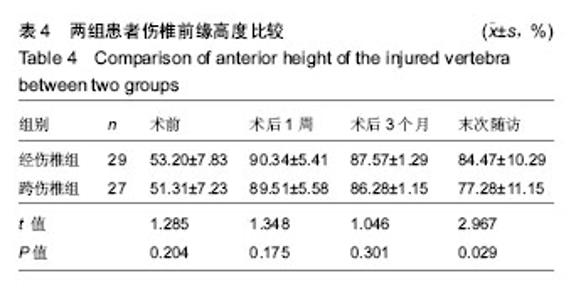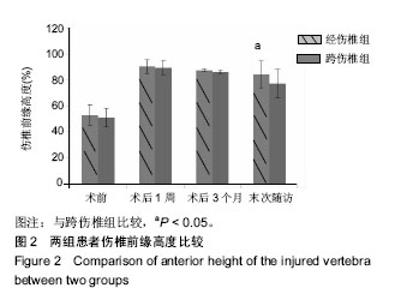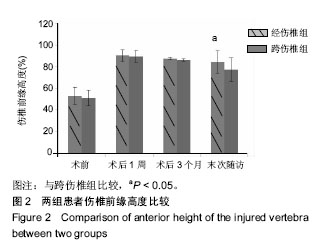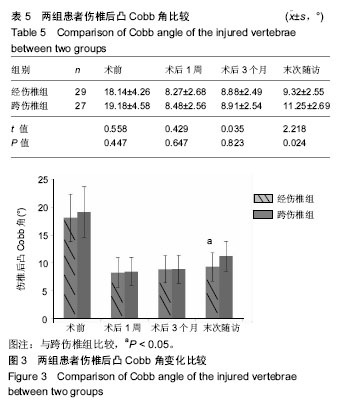| [1] Kim BG, Dan JM, Shin DE. Treatment of thoracolumbar fracture. Asian Spine J. 2015;9(1):133-146. [2] Roy-Camille R, Saillant G, Mazel C. Internal fixation of the lumbar spine with pedicle screw plating. Clin Orthop Relat Res. 1986;(203):7-17. [3] 张晓林,陈长宝,马信龙.胸腰椎骨折的分类系统及后路外科治疗的研究进展[J].天津医药,2013,41(7):733-736.[4] Tezeren G, Kuru I. Posterior fixation of thoracolumbar burst fracture: short-segment pedicle fixation versus long-segment instrumentation. J Spinal Disord Tech. 2005;18(6):485-488. [5] 曾忠友,孙德弿,金辉,等.胸腰椎骨折术后内固定松动、断裂的原因及预防[J].临床骨科杂志,2003,6(4):307-310.[6] Lakshmanan P, Jones A, Mehta J, et al. Recurrence of kyphosis and its functional implications after surgical stabilization of dorsolumbar unstable burst fractures. Spine J. 2009;9(12):1003-1009. [7] 裴葆青,师振鹏,王唯,等.后路固定术治疗胸腰椎爆裂骨折的生物力学研究[J].中国生物医学工程学报,2017,36(6):718-723.[8] Kao FC, Hsieh MK, Yu CW, et al. Additional vertebral augmentation with posterior instrumentation for unstable thoracolumbar burst fractures. Injury. 2017;48(8): 1806-1812. [9] 罗狄鑫,金勋杰,徐汪洋,等.胸腰椎骨折患者经伤椎置钉与跨节段椎弓根螺钉内固定治疗的临床效果比较[J].中国矫形外科杂志, 2017,25(14):1320-1323.[10] 聂锋锋,张英华,黄寿国.经皮微创椎弓根螺钉内固定与开放手术治疗胸腰椎骨折:Cobb 角与椎体前缘高度恢复的比较[J].中国组织工程研究,2014,16(44):7094-7099.[11] Lin YC, Fan KF, Liao JC. Two additional augmenting screws with posterior short-segment instrumentation without fusion for unstable thoracolumbar burst fracture - Comparisons with transpedicular grafting techniques. Biomed J. 2016; 39(6):407-413. [12] Liao JC, Fan KF. Posterior short-segment fixation in thoracolumbar unstable burst fractures - Transpedicular grafting or six-screw construct. Clin Neurol Neurosurg. 2017; 153:56-63. [13] Lin YC, Fan KF, Liao JC. Two additional augmenting screws with posterior short-segment instrumentation without fusion for unstable thoracolumbar burst fracture - Comparisons with transpedicular grafting techniques. Biomed J. 2016; 39(6):407-413. [14] Liao JC, Chen WP, Wang H. Treatment of thoracolumbar burst fractures by short-segment pedicle screw fixation using a combination of two additional pedicle screws and vertebroplasty at the level of the fracture: a finite element analysis. BMC Musculoskelet Disord. 2017;18(1):262. [15] Modi HN, Chung KJ, Seo IW, et al. Two levels above and one level below pedicle screw fixation for the treatment of unstable thoracolumbar fracture with partial or intact neurology. J Orthop Surg Res. 2009;4:28. [16] Leduc S, Mac-Thiong JM, Maurais G, et al. Posterior pedicle screw fixation with supplemental laminar hook fixation for the treatment of thoracolumbar burst fractures. Can J Surg. 2008;51(1):35-40. [17] Korovessis P, Repantis T, Petsinis G, et al. Direct reduction of thoracolumbar burst fractures by means of balloon kyphoplasty with calcium phosphate and stabilization with pedicle-screw instrumentation and fusion. Spine (Phila Pa 1976). 2008;33(4):E100-108. [18] 李健,杨健齐,张志,等.经伤椎椎弓根螺钉三椎体固定治疗胸腰椎爆裂性骨折的前瞻性研究[J].中华创伤骨科杂志, 2009, 11(8):732-737.[19] 曾金才,朱立帆,朱晓东,等.经伤椎单、双侧置钉内固定治疗胸腰椎骨折的疗效[J].临床骨科杂志,2016,19(3):283-286.[20] 曾忠友.经伤椎固定胸腰椎骨折的治疗进展[J].脊柱外科杂志, 2013,11(1):57-60.[21] Hirano T, Hasegawa K, Takahashi HE, et al. Structural characteristics of the pedicle and its role in screw stability. Spine (Phila Pa 1976). 1997;22(21):2504-2509. [22] Anekstein Y, Brosh T, Mirovsky Y. Intermediate screws in short segment pedicular fixation for thoracic and lumbar fractures: a biomechanical study. J Spinal Disord Tech. 2007;20(1):72-77. [23] 潘兵,张志敬,宋舟锋,等.胸腰椎骨折伤椎短椎弓根钉固定的生物力学研究[J].中国矫形外科杂志,2013,21(4):368-372.[24] 常锐,王德春.三种伤椎置钉固定胸腰椎爆裂骨折的疗效对比[J].中国矫形外科杂志,2017,25(6):521-526.[25] Maior T, Ungureanu G, Kakucs C, et al. Influence of gender on health-related quality of life and disability at 1 year after surgery for thoracolumbar burst fractures. Global Spine J. 2018;8(3):237-243. [26] Phan K, Rao PJ, Mobbs RJ. Percutaneous versus open pedicle screw fixation for treatment of thoracolumbar fractures: Systematic review and meta-analysis of comparative studies. Clin Neurol Neurosurg. 2015;135: 85-92. [27] 张秋林.经皮微创椎弓根螺钉治疗胸腰段骨折的适应证选择[C].2013年上海市医学会骨科学术年会,2013.[28] Ozdemir B, Kanat A, Erturk C, et al. Restoration of Anterior Vertebral Height by Short-Segment Pedicle Screw Fixation with Screwing of Fractured Vertebra for the Treatment of Unstable Thoracolumbar Fractures. World Neurosurg. 2017; 99:409-417. [29] Kanna RM, Shetty AP, Rajasekaran S. Posterior fixation including the fractured vertebra for severe unstable thoracolumbar fractures. Spine J. 2015;15(2):256-264. [30] 许财元,张涛,高中玉,等.短节段椎弓根钉内固定治疗胸腰椎骨折——经伤椎与跨伤椎的临床疗效比较[J].天津医科大学学报, 2016,22(1):58-61.[31] 刘匆聪,镇万新,高国勇,等.经伤椎与跨伤椎短节段内固定治疗胸腰椎骨折的疗效比较[J].广东医学,2013,34(4):590-592. |
